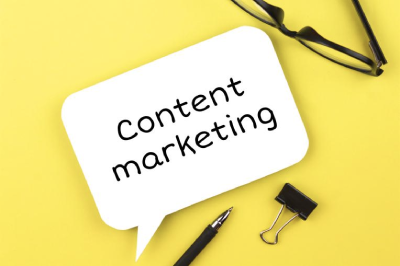Content marketing in B2B is not just about generating traffic – it’s about building momentum across the entire funnel: from awareness to conversion to revenue. A high-performing content engine doesn’t stop at writing a blog post. It integrates automation at every touchpoint: planning, publishing, nurturing, and sales handoff.
Let’s break down what that looks like when executed with a modern marketing automation system.
Top of Funnel: From Idea to SEO-Optimized Publish
This is where content begins – identifying what to create and getting it in front of the right audience.
Step 1: ChatGPT + Semrush for SEO Blog Ideation
- ChatGPT generates topic ideas based on your target audience, product positioning, or industry trends.
- Semrush validates those ideas by checking keyword volume, competition, and intent.
- The synergy between AI and SEO data means your content plan is both creative and search-optimized.
Example: ChatGPT suggests “How [Your Product] Solves X Problem in Logistics.”
Semrush shows the keyword “logistics automation tools” has strong monthly volume and transactional intent.
Step 2: Jasper or ContentShake AI Drafts the First Version
- These tools generate long-form content using proven templates and prompts.
- Jasper integrates tone, brand style, and keyword usage.
- ContentShake AI pulls from real-time competitor data to shape content structure.
Instead of staring at a blank page, your writers start with a 70% complete first draft. For more tools on content automation, check our post on Top Content Automation Tools 2026.
Step 3: Surfer SEO Optimizes for On-Page Performance
- Surfer SEO provides a content score, keyword suggestions, internal linking prompts, and structure recommendations.
- The article is aligned with top-ranking pages, improving chances of ranking organically.
Writers refine content based on both editorial voice and real-time SEO data.
Step 4: WordPress Schedules & Publishes Automatically
- The optimized content is added to WordPress with pre-defined metadata, internal links, and featured images. For more on this, you can check out our Content Marketing Automation Strategy for 2026.
- Using plugins like Jetpack or WP Scheduled Posts, the blog is auto-published at optimal times.
Your team can plan a month of content and set it on autopilot.
Middle of Funnel: Automated Nurture and Engagement
This is where automation turns passive readers into active prospects.
Step 5: Brevo or HubSpot Triggers Behavior-Based Emails
- Brevo (or HubSpot) detects when someone reads a blog, downloads a resource, or revisits your site.
- Based on that engagement, they receive personalized emails or access to gated content.
Example: Someone reads two blogs on cybersecurity trends → they get a curated email with a webinar invite.
Step 6: Dynamic CTAs Based on Funnel Stage
- Landing pages or blog templates are embedded with dynamic CTAs using HubSpot or Unbounce.
- First-time visitors might see “Download the Guide,” while repeat visitors see “Book a Demo.”
Personalized CTAs drive higher conversion by matching intent and stage.
Step 7: Lead Scoring Tracks Depth of Engagement
- Every content interaction (page views, scroll depth, downloads, email opens) adds to a prospect’s lead score.
- Scores are automatically updated in your CRM or automation platform.
This ensures sales only get qualified, marketing-ready leads.
Bottom of Funnel: From Sales Handoff to Closed Deal
Here’s where automation connects marketing to revenue.
Step 8: High-Scoring Leads Enter CRM Sequences
- Leads that cross a scoring threshold are pushed into a sales sequence via HubSpot, Pardot, or ActiveCampaign.
- Automated emails or tasks are assigned to sales reps with full context on past content engagement.
This ensures timely follow-up without wasting rep time on unqualified leads.
Step 9: Sales Team Is Notified Automatically
- Notifications are triggered via Slack, email, or CRM alerts when a hot lead hits your criteria.
- Sales can jump in with messaging tailored to the exact content journey of that lead.
Example: A prospect who read 3 buyer guides and requested a pricing page view gets a “warm lead” notification with links to those actions.
Step 10: Performance Reporting Closes the Loop
- Internal dashboards track which content led to the most conversions, the shortest sales cycles, and the highest deal values.
- Platforms like HubSpot, GA4, or Matomo provide attribution models.
Marketing can now double down on what works and sunset what doesn’t — automatically.
Final Thoughts: Why This Funnel Works
This isn’t theory. This is what content marketing at scale looks like in 2026:
- AI + SEO for fast, smart content creation
- Automation for nurturing and scoring
- CRM integration for seamless sales handoff
All of it running with fewer team hours, less guesswork, and more visibility.
If you want a marketing system like this but don’t know where to start, Reliqus can help you design, build, and run it – tailored to your B2B goals.
Ready to future-proof your funnel? Contact us or schedule a free consultation to learn more.

